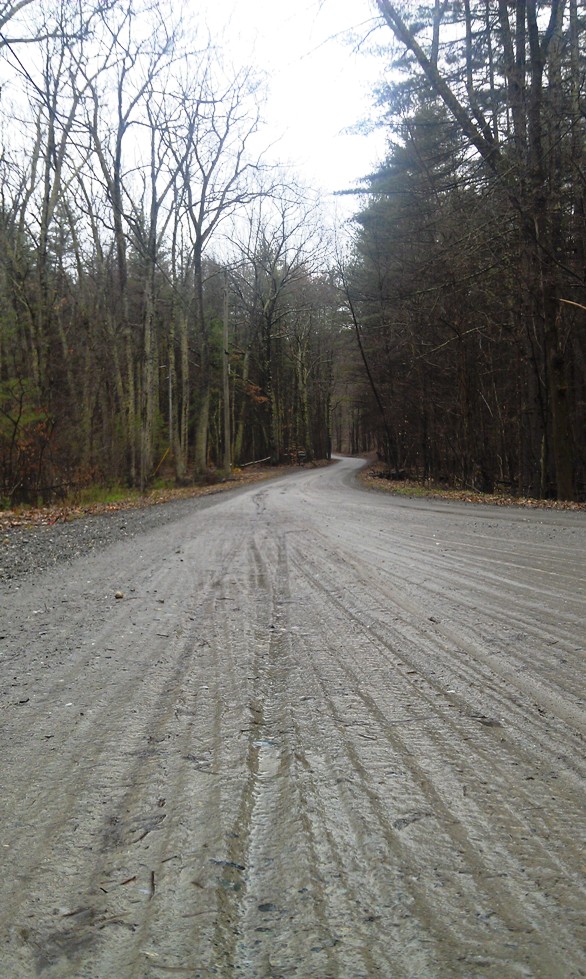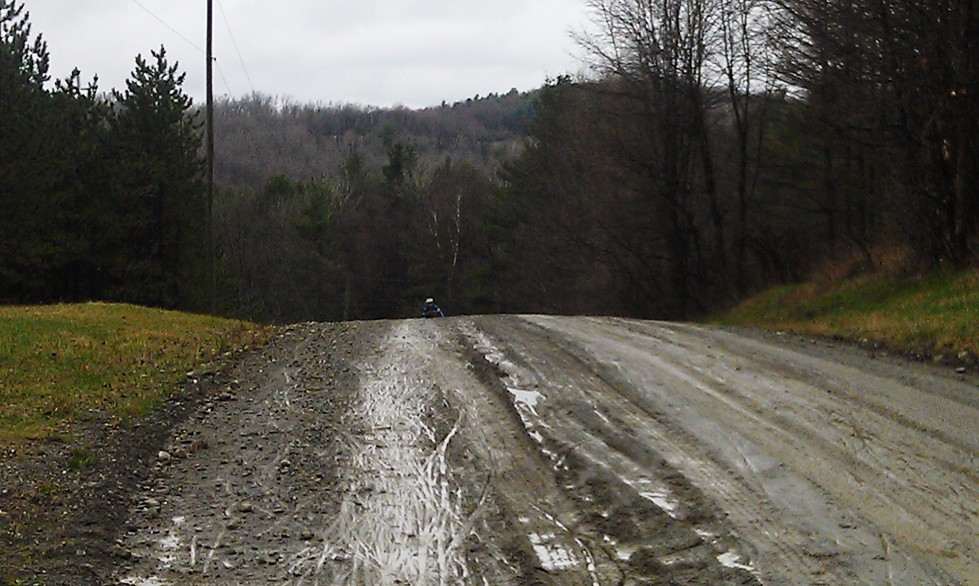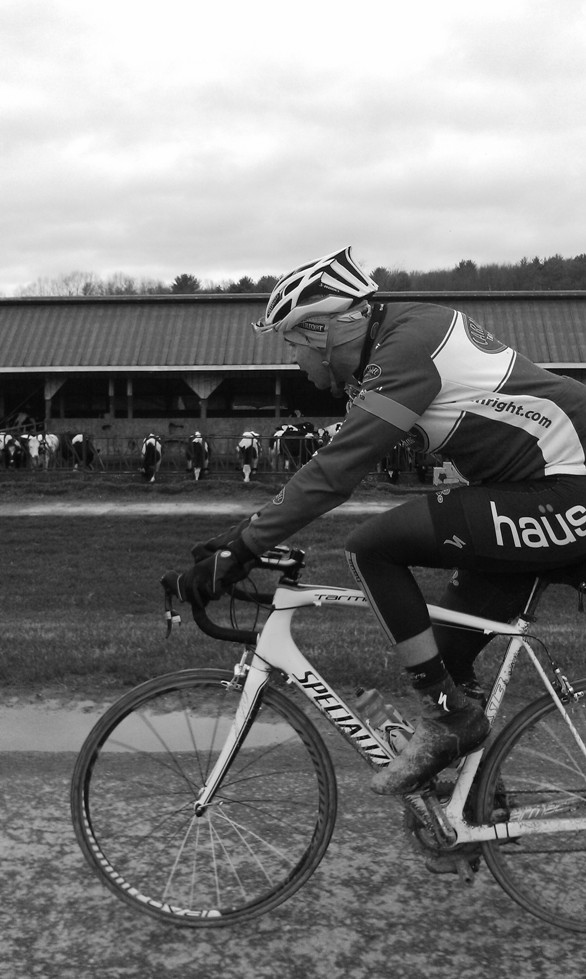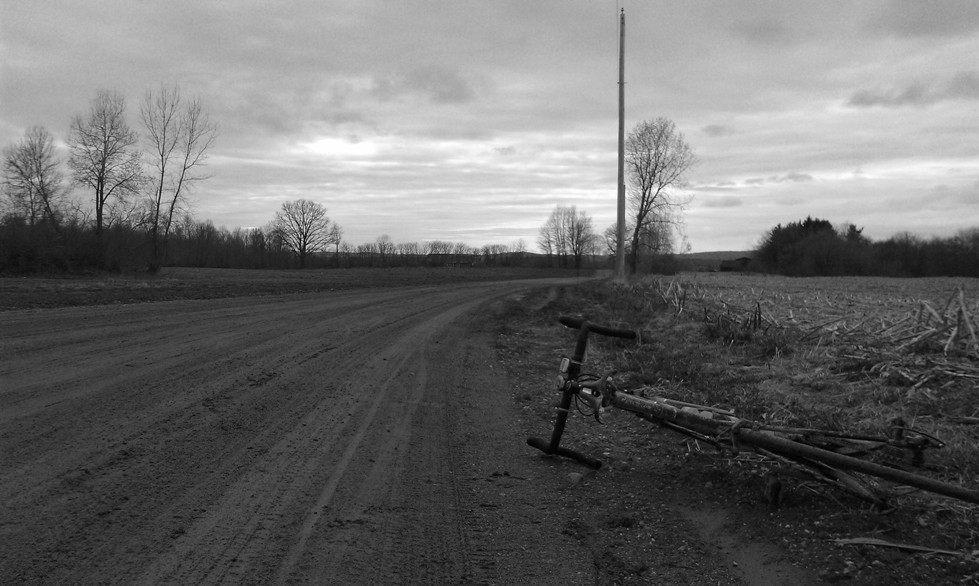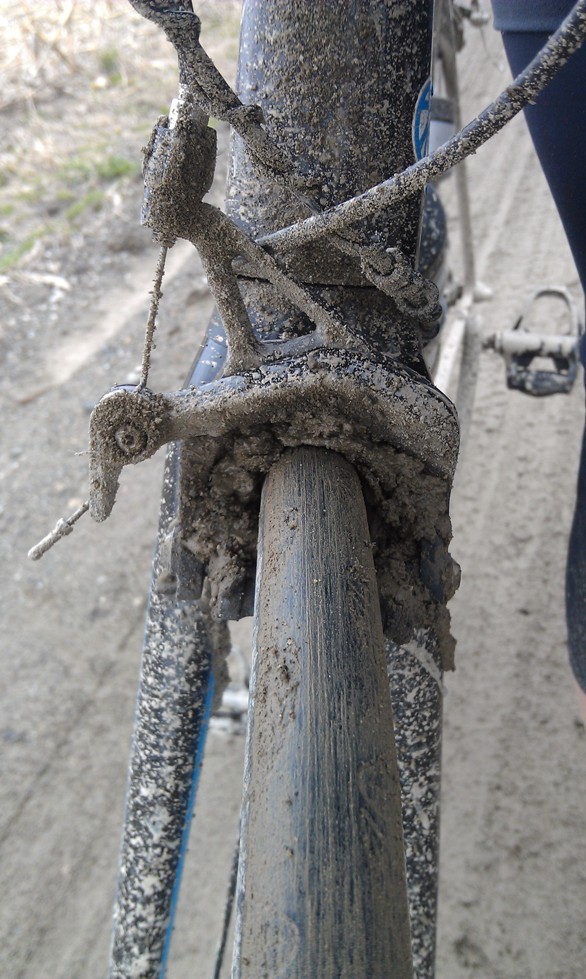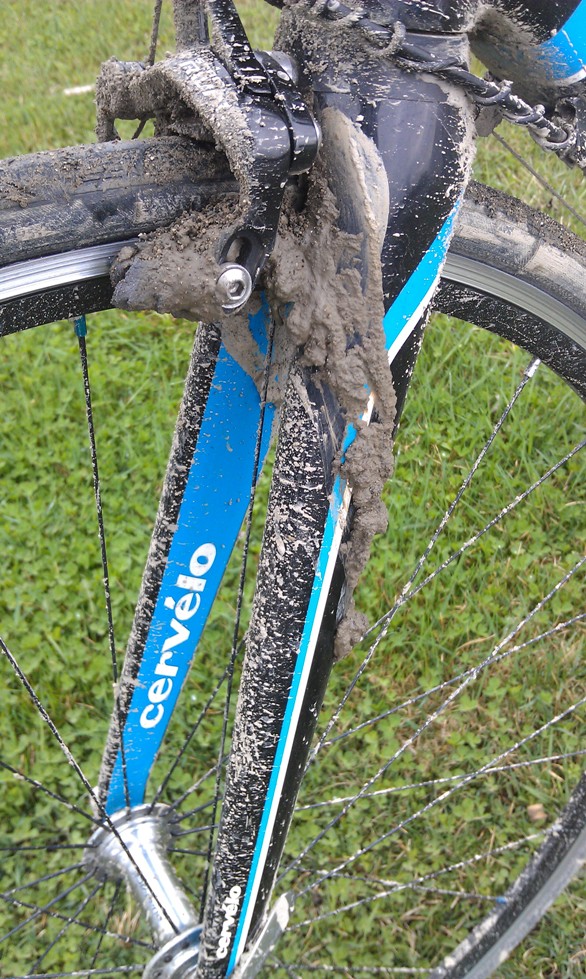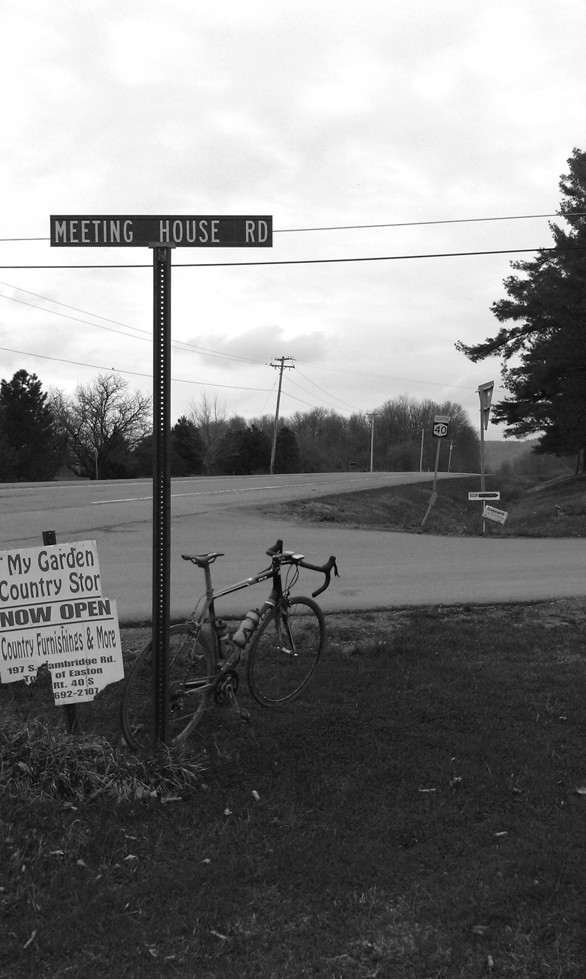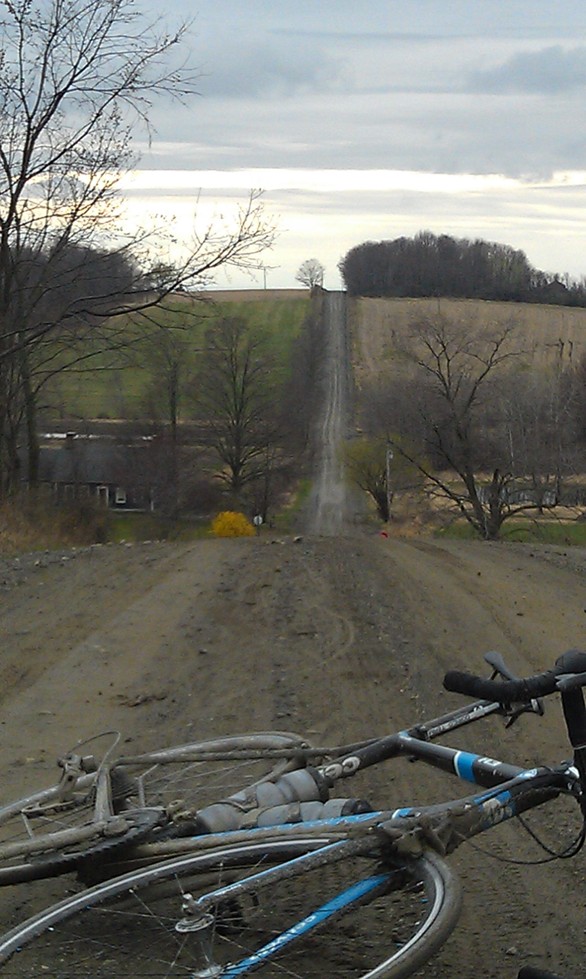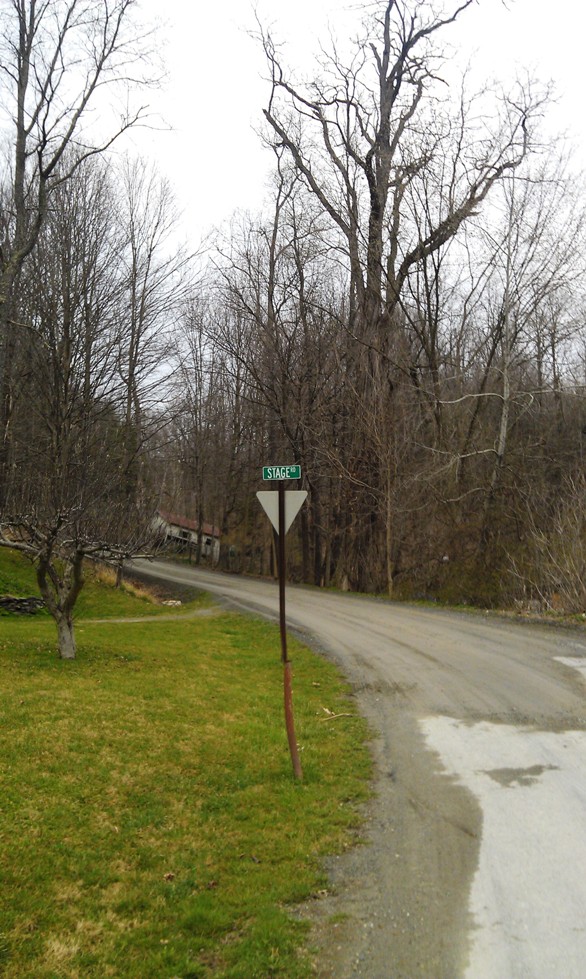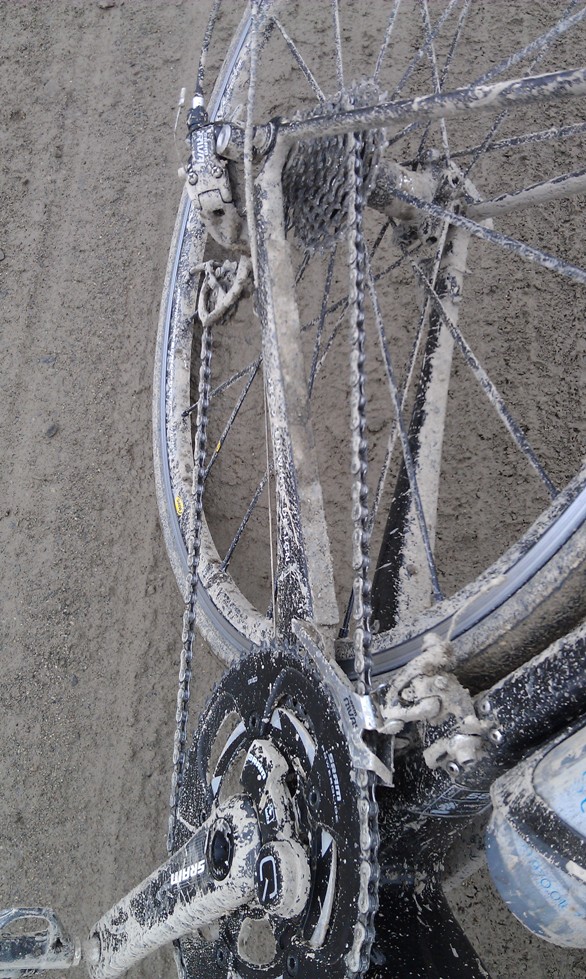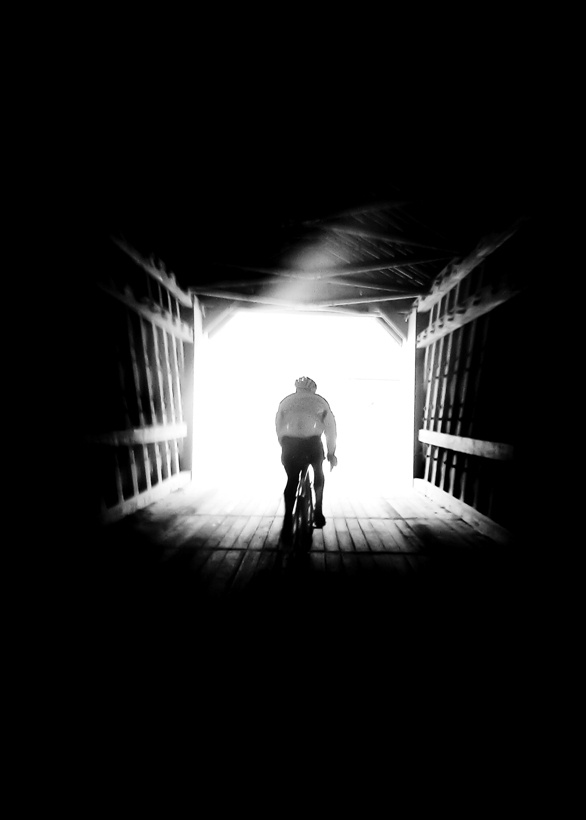 Battenkill is a fun and very popular New England spring classic since it mimics the exciting pro tour spring classics going on this time of year (think Tour of Flanders, Paris-Roubaix, or Strade Bianche). Battenkill has its own American flavor, including many kilometers of dirt roads in deeply rural areas with farm animals and covered bridges.
Battenkill is a fun and very popular New England spring classic since it mimics the exciting pro tour spring classics going on this time of year (think Tour of Flanders, Paris-Roubaix, or Strade Bianche). Battenkill has its own American flavor, including many kilometers of dirt roads in deeply rural areas with farm animals and covered bridges.
Each year I like to not only compete in the race, but make a trip out to the course in the weeks prior to recon the course. While many of the key selective points remain unchanged from year to year, other parts of the course are switched up, adding new and unique challenges.
In the days prior to my recon ride, the weather forecast was grim, calling for showers, and then rain, with temperatures in the low 40’s. It occurred to me then that I’d never ridden the Battenkill course in the rain. For whatever reason, I’d always been lucky and had unseasonably warm, dry conditions at Battenkill.
John S and I met at Cambridge High School, not far from the start. Immediately after we arrived the rain picked up significantly. The thermometer in my car read 42°F. After carefully studying weather radars on our phones (which loaded up at 1X speeds), we decided to grab sandwiches and let the rain pass. It didn’t pass as quickly as we’d hoped, and we still ended up riding the first hour in cold rain.
The first miles of the ride went quickly, despite the rain. I finally got to put my Rapha Paul Smith rain jacket to good use and it was great. It was wet enough that I even used the annoyingly pink butt flap to keep my backside dry. Wearing that flap down feels like a target for passing traffic, just asking for trouble. But I was dry, happy, and we cruised right along, passing through the Eagleville covered bridge and into the first challenges of the day.
Robinson Road is the first dirt section and it’s no big deal, being downhill and easy. But it’s still exciting to get to this point because it’s the first indication of what the dirt roads will be like that day. Some days it’s bumpy, other days it’s loose, but this day it was soaked: slippery and slow. My 23c 100psi tires sunk deep into the road and my front wheel was loose as if I were on ice. My speed dropped below 20mph despite the negative gradient. It was going to be a long day.
Perry Hill Road is the first significant hill of the day being a long false flat with a few steep kickers and a nasty steep part at the top; it can be a 10 minute effort. This road is paved, so it was no different in the rain.
Juniper Swamp Road immediately follows Perry Hill Road, with only a short, fast descent separating the two. They’re positioned so close together on the course that they can feel like a single effort. There’s very little time for recovery.
The turn onto Juniper Swamp Road is almost a hairpin, and you’re turning onto dirt with uncertain traction. Only today it wasn’t dirt, but an inch or more of mud. For a kilometer or so the road is flat, and I pedaled hard at threshold power just to hold on to a measly 12mph. Normally my speed would exceed 20mph. My tires were slipping around in every direction as if I were riding a sandpit in a cyclocross race. I tried to picture myself doing this in a peloton and thought it would be nearly impossible.
By the time I got to the start of the hill my heart rate was already almost in threshold zone. I looked up the steep 20% gradient and saw many tire tracks from a large group ride that had left earlier in the morning. Those tracks navigated carefully around loose piles of mud, mostly remaining within the narrow, packed automobile tracks.
As I approached the top of the climb lactic acid was fierce and my speed dipped under 3mph for extended periods of time! Between this ridiculously slow speed and the slippery mud, I was just barely able to stay balanced and keep upright. Many of the tire tracks turned to foot prints. I had to wonder how many people were able to cleanly ride the road in these conditions.
And that was just how Battenkill was going to be this day in the rain; completely ridiculous. We were afraid to descend any faster than 15 or 20 mph. Any small amount of off-camber in the road would send us sliding in that direction towards the trees. And hitting a patch of thick mud would send your body shooting forward on the bike as if you were spring skiing and hit a slushy patch of snow. It took us over 90 minutes to ride the first 20 miles.
Luckily, the rain did stop around this point and the dirt roads dried out surprisingly quickly. The dirt did not harden up by any means, but at least my tires weren’t sinking several inches in and I could maintain a reasonable speed.
The 2012 edition bypasses Joe Bean Road, which is more than a 5 minute climb for most people at mile 25. The bypass is much flatter and shouldn’t be selective in most cases. This isn’t to say that the course as a whole is any easier, but that the selections may occur later in the race than in previous years.
Carney and Cassidy Road were new to the 2011 edition and are a challenging hilly dirt alternative to the flat paved run-in to Greenwich. My first impression was that this new section was easy and just good for the farm-animal scenery. But shortly after passing a cow pasture we made a 90 degree left hand turn and saw a huge dirt wall directly in front of us. These steep sections can look especially menacing. Luckily it’s no more than a 2 minute climb, and stomping on the pedals hard in my 39x26 was enough to pass it quickly. But that initial wall is not the end. The road descends, turns, and another wall slaps you in the face. And this repeats over and over until I lost count. No single climb was significantly long, but they’re steep enough and frequent enough to really make the legs sting.
The back roads around Greenwich seemed to drag on forever, probably because I wasn’t familiar with them. There is plenty of dirt, short climbs, turns, and farm animals, but there is no single part that would strike fear into most racers. Well, other than a mean looking guard dog that will give you good reason to sprint on a downhill.
After turning south onto Route 40 there are about 10 miles of what are probably the easier parts of the course. This is new to the 2012 edition. I wouldn’t call it easy; there are still plenty of rollers and an annoyingly bumpy dirt section on Cheese Factory Road. But with the difficult sections that follow it, you’ll want to save every ounce of energy you can.
Along Route 113 you can see the Hudson River down on your right and you know that you’re at a low elevation. Before too long you make the inevitable turn up onto Wrights Road, a dirt section that rises continuously for miles.
Wrights Road is a long gradually-rising dirt road, but there are a number of steep kickers that make it hard. After each kicker it never really eases up, with the gradient remaining on the positive end of the scale. You’ll need to be able to recover at a reasonably high power output. And with soft dirt and clogged brakes it feels especially slow.
Meeting House Road has always been part of the race, but 2012 introduces a new part of the road. It picks up right where Wrights Road leaves off, with steep kickers and long false flats.
By the time I got to the top of the first dirt kicker on Meeting House Road I felt as if I’d been red-lined forever. My legs were trashed. And this was very bad since Meeting House Road is all up and down steep dirt walls. By the time I reached safety (pavement) again I felt abused.
There are several miles of enjoyable pavement between Meeting House Road and the final challenge of the day: Stage Road. I find it hard not to enjoy this gentle pavement, despite the fact that I’m several difficult hours in the saddle. The scenery is just too good with covered bridges, more farm animals, and winding rivers.
But then you reach Stage Road. If you’re in the lead group still you know the pace is going to be ballistic. It’s the last hill and the last opportunity for a good climber to shed the fast sprinters. And it’s dirt, so in the rain the climb is going to be slow and long. I would think this would favor the climbers’ chances of getting away and staying away.
A fast descent and flat 5K sprint on good pavement is all that follows Stage Road. With about 250m to go the road turns 90 degree right before the finish in front of Cambridge Town Hall.
Summary
We were lucky to have the rain stop when it did. While the dirt sections in the second half of the road were far from good, they were nowhere near as bad as the earlier roads. Juniper Swamp Road was the worst, as indicated by our 12mph average speed in the first 90 minutes. Had we continued at this pace it would have taken us over 5 hours to finish the course. In dry conditions I typically finish recon rides in around 3 hours and 40 minutes.
I also don’t know if I’d be brave enough to do this race in hard rain. The wet dirt roads felt like riding a MTB in snow or a cross bike in sand, and riding side by side 150 other racers would be especially scary. While I can’t think of any amateur race editions of Battenkill in the rain, I do recall one pro race edition in the rain. Having now had the chance to experience the ridiculousness that occurs, I am humbled and hold the pros in even higher stature than before.
Also, it took me three attempts before I reached acceptable bike cleanliness. After each of the first two attempts I found significant pockets of sand that I’d missed. Finally I decided to get more serious with the cleaning and stripped off most of the parts, cleaning them one by one. The effort required for this one rainy day at Battenkill managed to drag on for days after.

